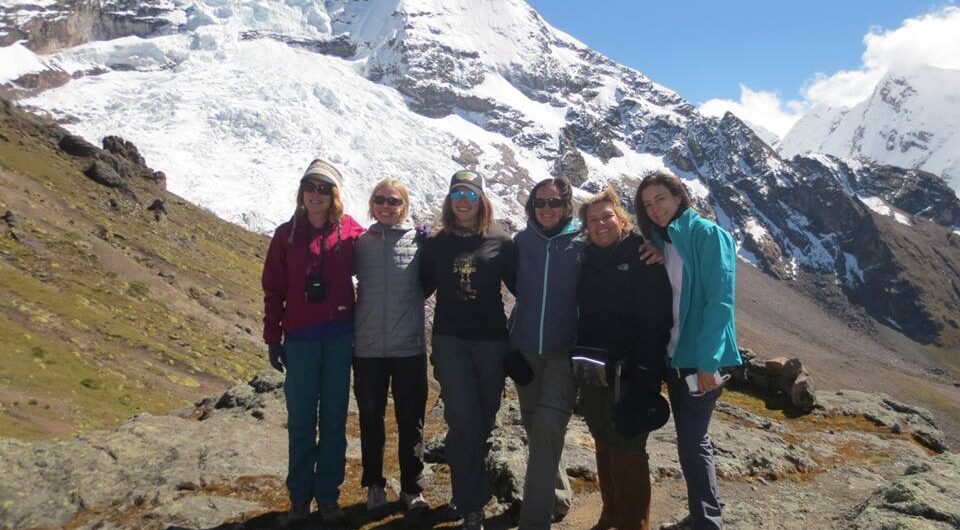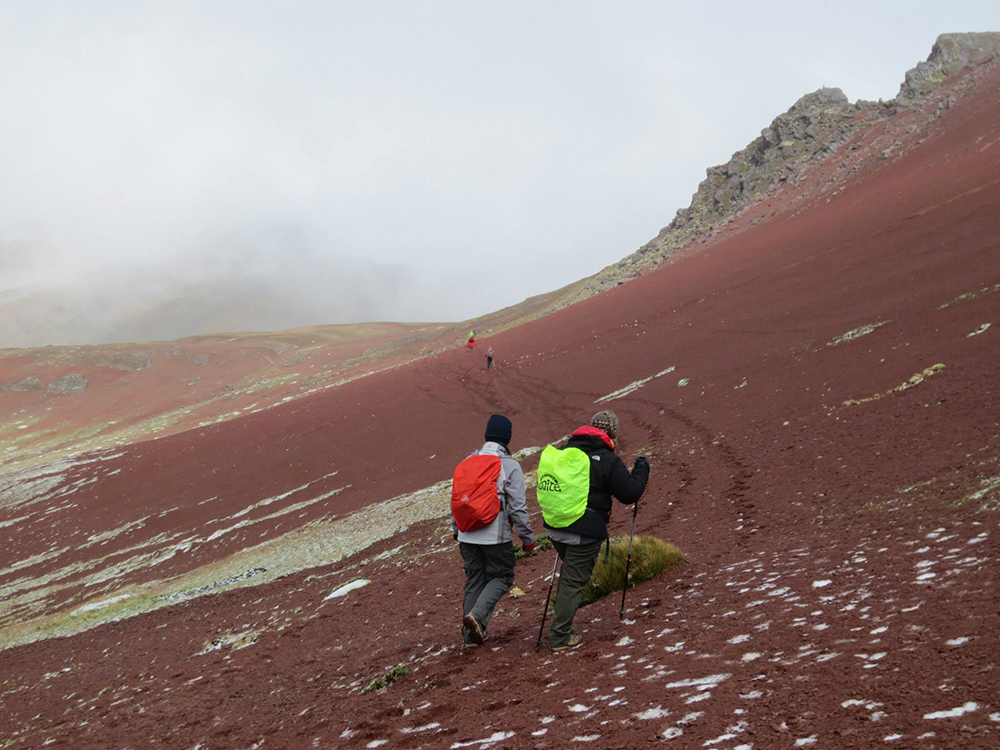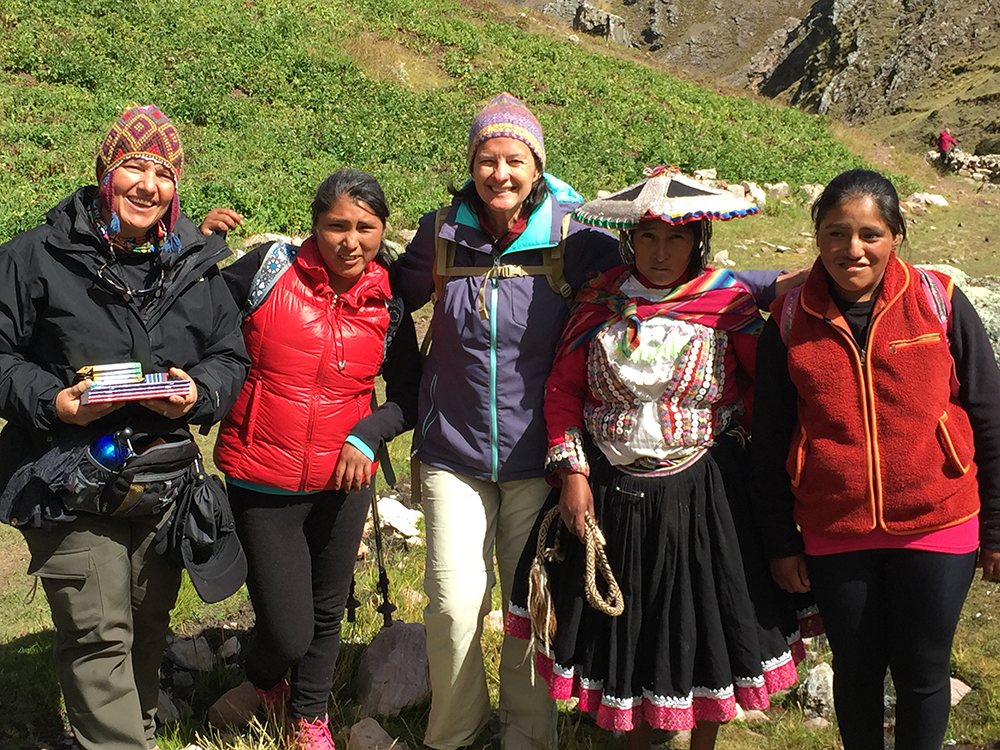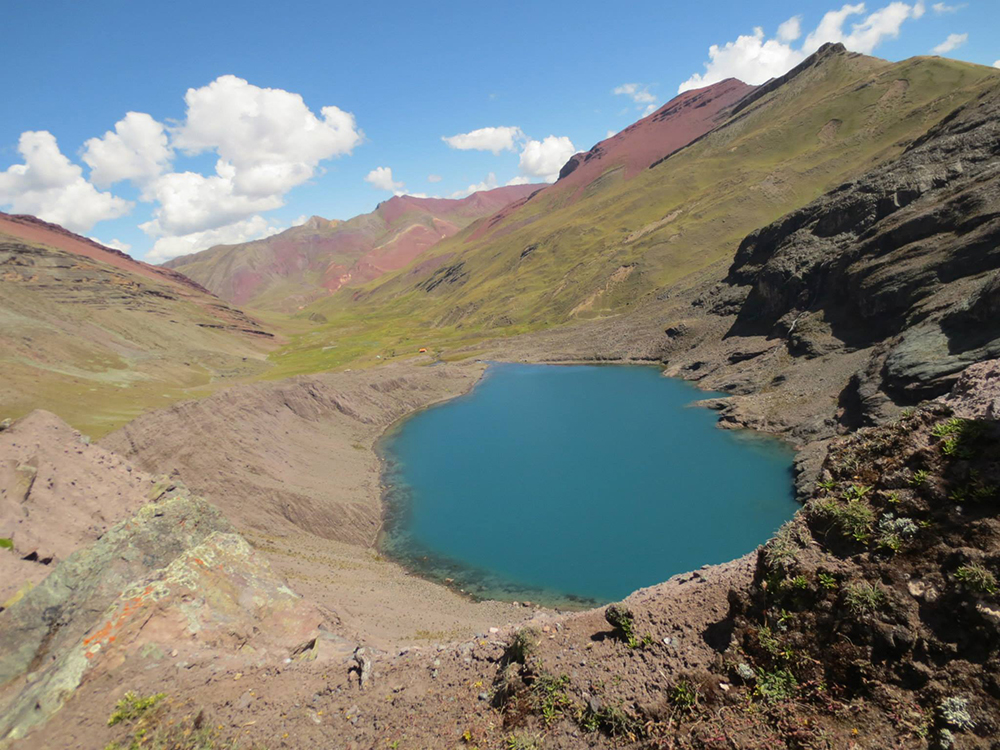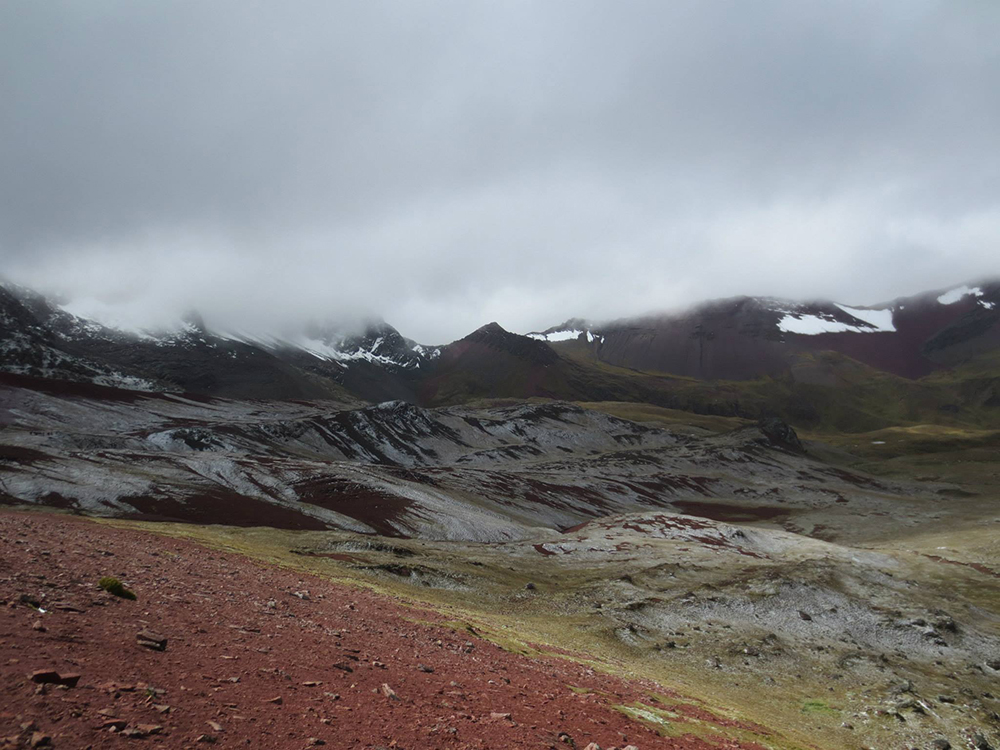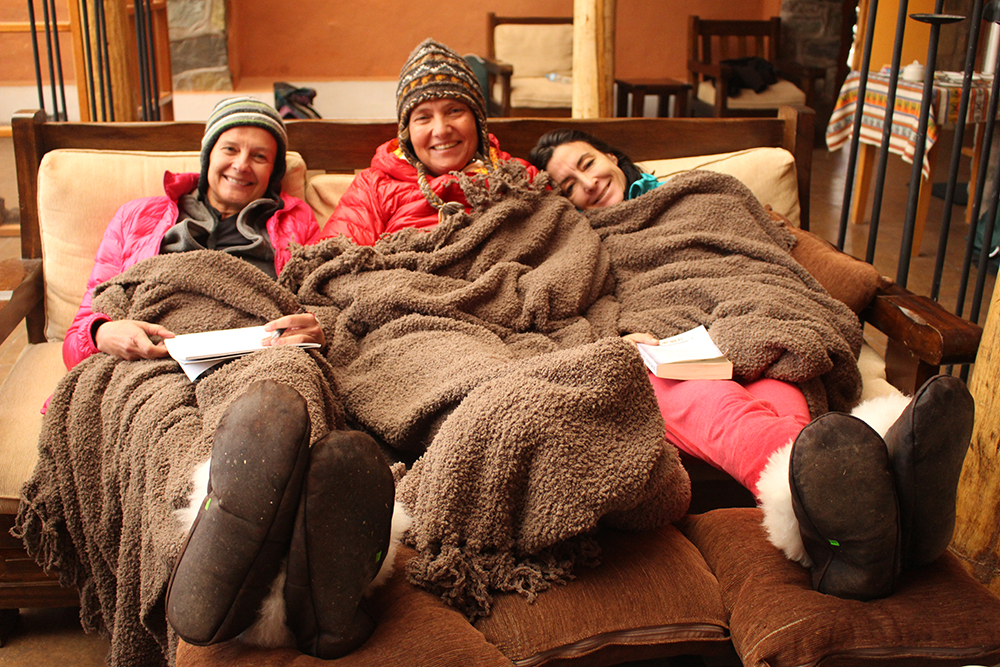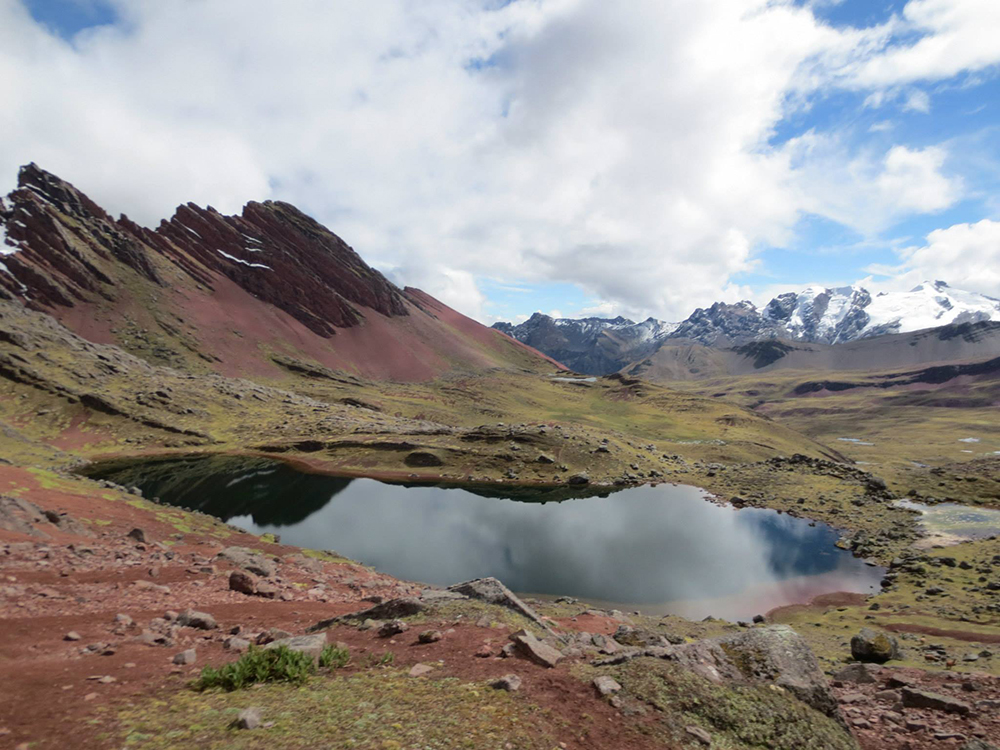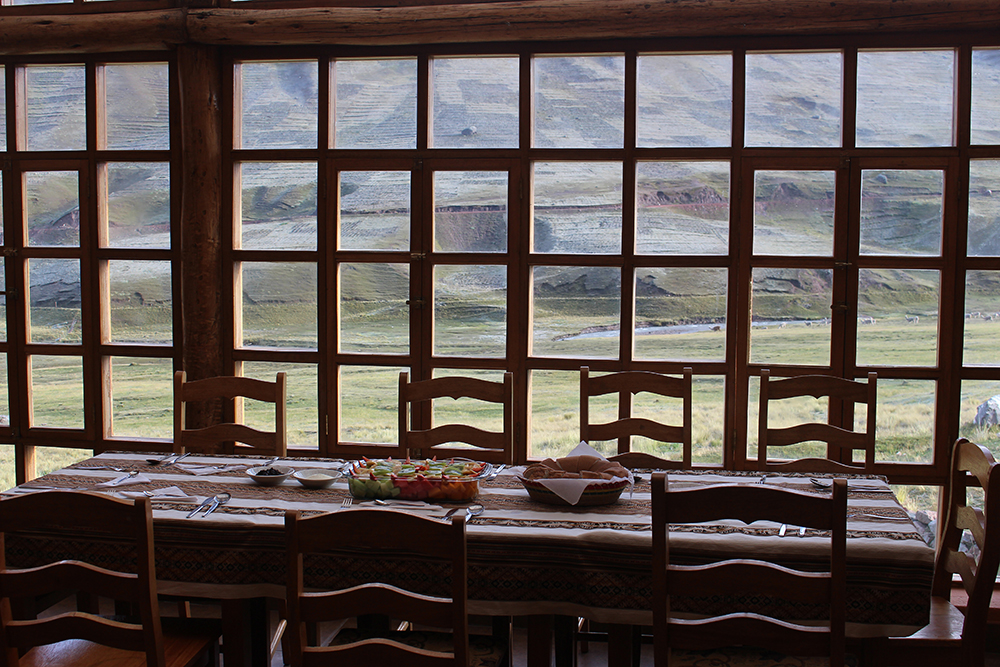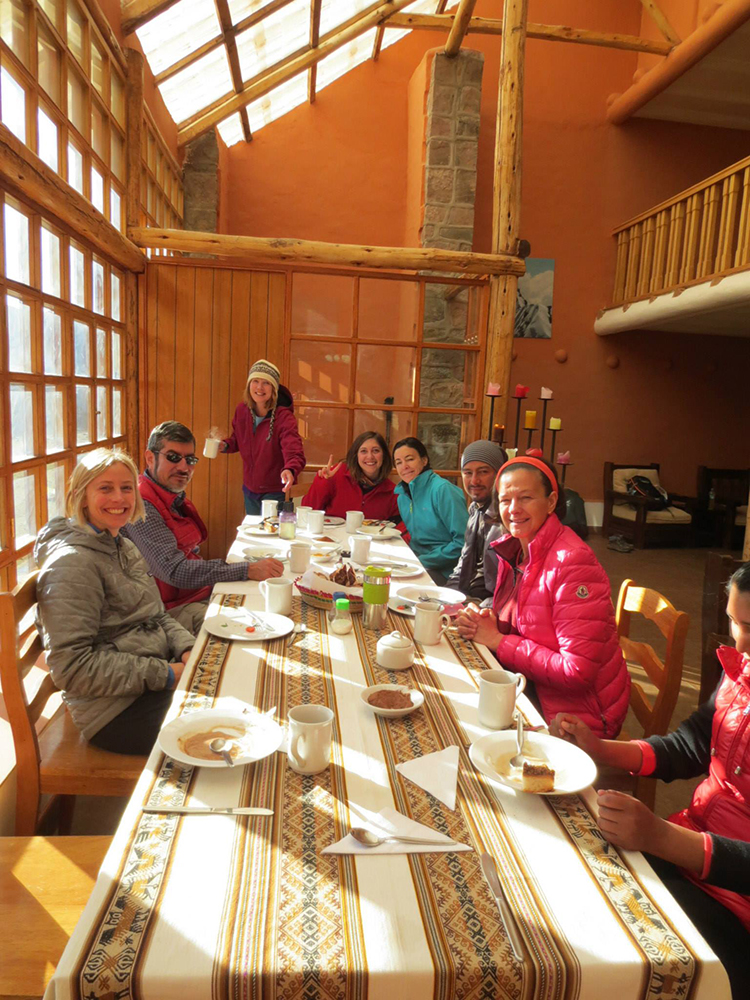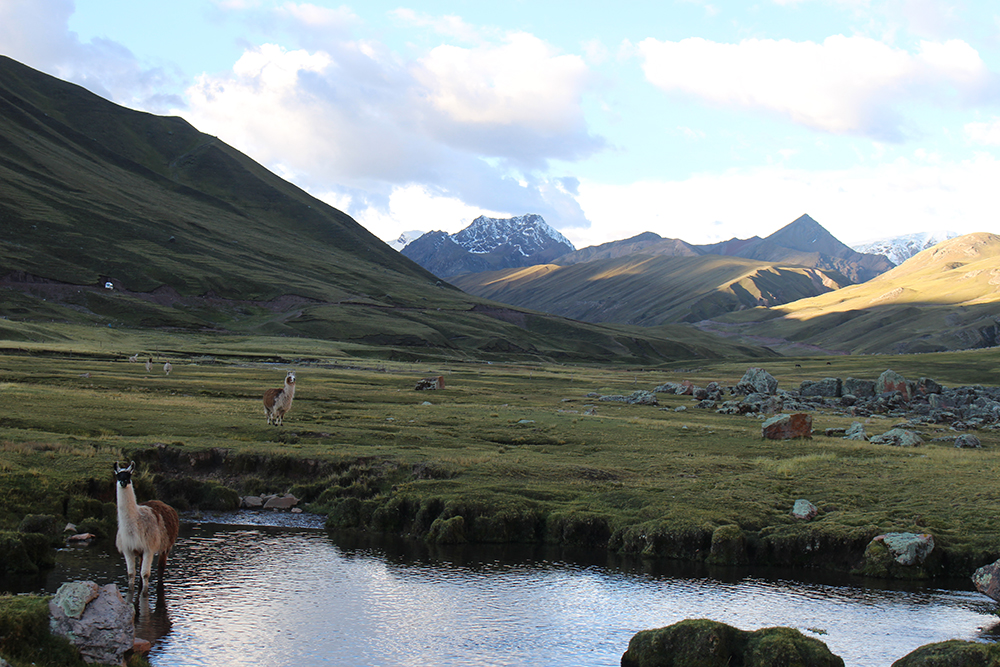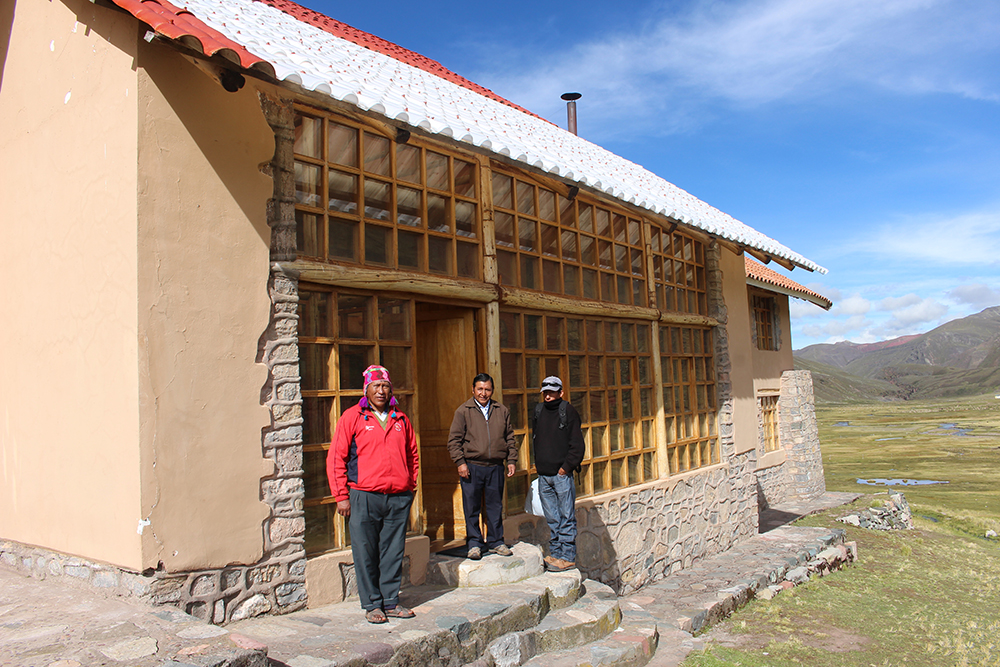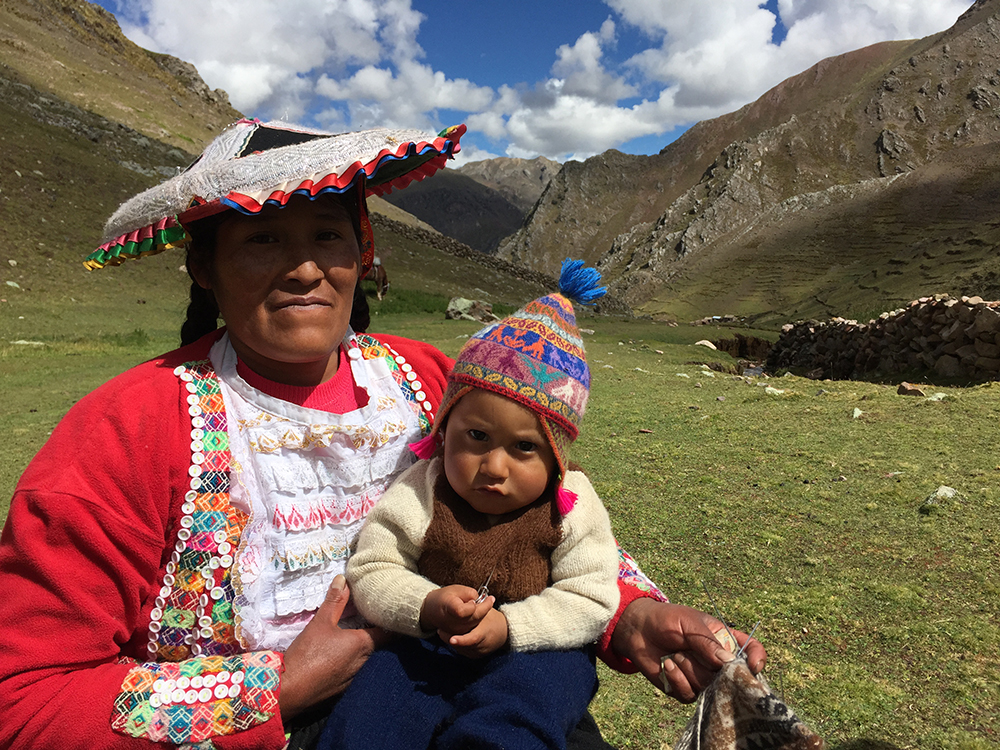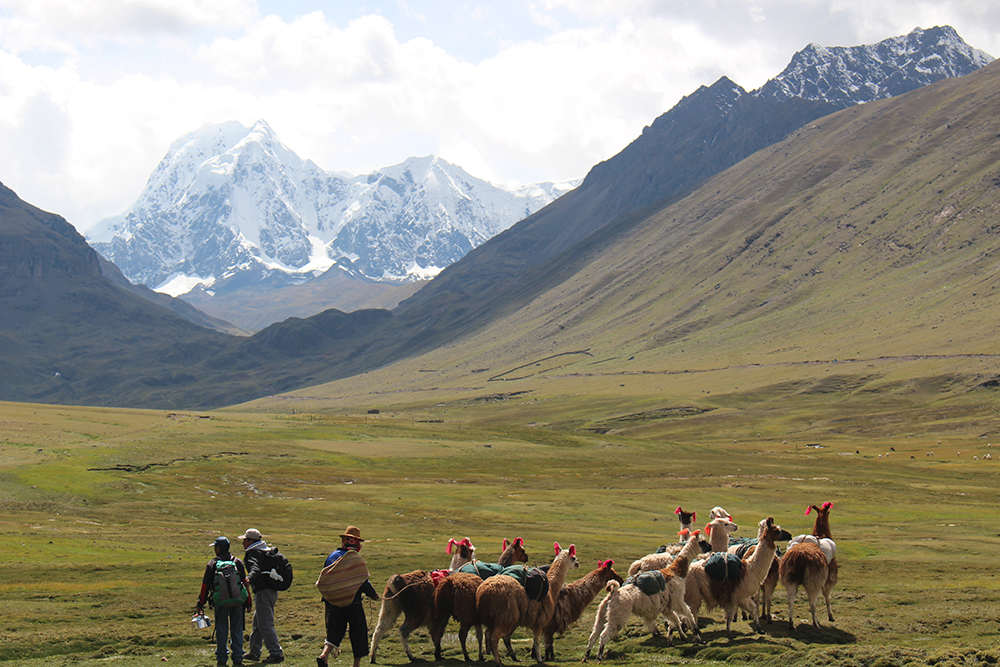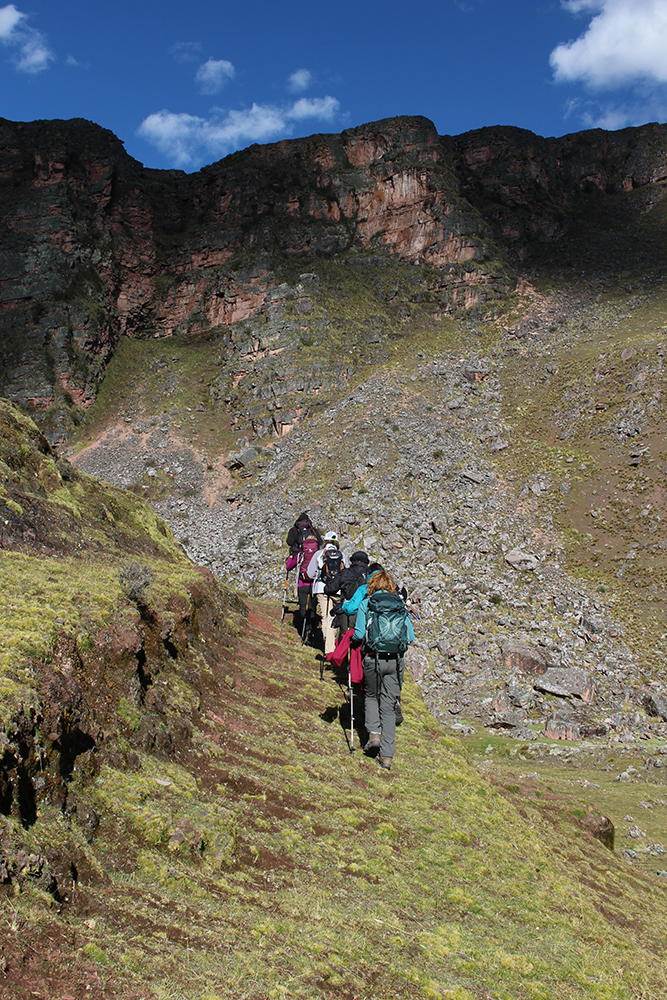A few days ago I returned, renewed and exhilarated, from trekking the Ausangate Lodge Trek route along the southern face of Apu Ausangate in the Southern Andes of Peru–two hours from Cusco, as the Condor flies, and four hours driving distance. This is a fantastic trek in Peru for adventurous travellers.
Ausangate Lodge Trek
Apu Ausangate is the most sacred mountain deity in the Cusco region, deserving much respect and reverence, as well as pilgrimages and offerings. It stands majestically at 6,372 meters (20,905 ft), and is Peru’s second highest peak. We stayed at Machuraccay Lodge right at the foot of this towering mountain on the second night of our trek. As is the custom, we made our respective offering the morning of our departure so Apu would grant us, and the llamas traveling with us, his blessing.
Ausangate Eco-Lodges
The 5 day/4 night Ausangate Lodge trek stretches along and between the four eco-lodges which constituted our home every night. This trek is not as well-known as the more popular and therefore more crowded treks in the Cusco region. In fact, the route is carefully designed to showcase distinct landscapes in the area and to avoid other hikers–not that there are many in the area–who hike while camping around the Ausangate peak. It would be fair to say that the route is exclusive to trekkers that stay in the lodges. The paths we used have been utilized for centuries and continue to be by local sheep and llama herders and by the locals who use their llamas for transport.
The Social Project
Due to the isolation in this region, the livelihood of the local people, even today, is very limited and provides them little income. It is based on weaving, sheep and llama herding and subsistence agriculture. The traditional value of llamas, to transport goods for trade, is quickly vanishing given that roads are being quickly built and trucks provide a more effective means of transport. The only alternative, in the eyes of the locals, is migrating to cities or giving up their mineral rich mountains to a potential mining project in exchange for cash hand-outs. The local people are wary, as they are well aware of the negative consequences of mining on their land and their lifestyle despite potential short term benefits
The Ausangate Lodge Trek Project project was conceived to provide a sustainable vehicle to both showcase this unique part of the world to visitors and bring direct benefits to the local people of the area in the way of jobs and further education. It consists of a joint venture between the local community who have donated their land to create a private reserve and provided labor to build the lodges and private enterprise. The commitment is that only local people are employed in the tourism venture as staff. All the proceeds the community makes on their share of the venture must be spent on education.
This year, the first member of the community who has benefited with financial aid from the project is graduating from university in Cusco. After years in the business of tourism and having visited and experienced many so-called eco-tourism lodges and projects, it was refreshing to experience one that actually “walks the walk”. So, with high expectations and a feeling of certain reserve, my intrepid little group of six women from four continents, led by our aptly named guide, Jesus, embarked in this adventure.
The Ausangate Trek Experience
The experience was all-absorbing, not only as a result of the physical effort required to hike this route entirely stretching above 4,000 meters (13,123 ft), but because of the very powerful and majestic nature surrounding us and the cultural interaction experienced. We had the invaluable opportunity of obtaining a close glimpse of the life and customs of the people in the High Andes.
We set off from Cusco on day one, and four hours and several stops later–including one to visit the stunning interiors of the 16th Century baroque temple of Checacupe–we lost mobile coverage and the adventure began. An easy three-hour walk from our lunch spot took us to our first lodge, called Chillca. The two-story lodge was surprisingly well appointed given the remote location. All lodges in the circuit have seven double and triple en suite rooms, dining area and lounge with fireplace. There is propane-fueled hot water for three hours every afternoon but no electricity.
Click here for full trek itinerary details
So, as the sun set and the moon went up, we dined by candlelight and got to know more about the upcoming days. It was here where we met Florentina and Brigida, our 18 and 16 year-old travelling companions who we had invited to trek with us, with the aim of fostering intercultural exchange. These two young students, who excelled in their class, were receiving this travel opportunity as a prize. Only by getting to know Florentina and Brigida during our five days trekking together could we come to appreciate the tremendous cultural and language gap that exists among western cultures and the Quechua mountain people, and the effort required to train local people to be part of the service of a tourism company. Not only do they have enormous difficulty communicating in any other language than Quechua, but their code of conduct is so different from ours. They are so painfully shy that connecting is virtually impossible at the beginning, and only after intensive training and commitment do they acquire the skills required to work with foreign visitors. Our support team and local staff were fully trained and charming–some even knew a bit of English.
Each lodge has a permanent caretaker, but the rest of the team travels with the group: Marquitos and Alejandro, our horse men, Vilma, our housekeeper, and Nico and Justino, our cooks. Behind us came our llama men leading our 15 or so llamas who, by carrying our luggage, were keeping their role as an as an active economic resource on this land.
We were woken every morning at 6:30am by Vilma, who sang a little song in Quechua for us as a wake-up call. What could be better? A hearty breakfast of porridge, omelette, coffee or tea and fresh fruit awaited us and prepared us for our daily routine.
The ensuing five days consisted on walking 5-7 hours per day, or riding small and tame Andean horses, depending on your preference, while contemplating, chatting, and exchanging ideas and points of view with our fellow trekkers and team. Not having Wi-Fi or electricity was a big part of the magic–a luxury to escape our excessively connected world for a few days.
A welcome break during each day was the sumptuous picnic lunch prepared for us in the most scenic spots and always underneath a cover, accounting for weather changes.
Wildlife & Landscapes
After having spent blissful days witnessing the most spectacular and unique landscapes, braving storms and sighting condors, vicuñas, and Andean geese, observing colorful glacial lakes, and above all getting out of our respective comfort zones, we arrived at our strategically-located cozy hand-built adobe lodges, where we were warmly greeted by the local care taker. On arrival, we immediately put our llama wool slippers on, had a warm herbal tea or mate and biscuits and relaxed by the fireplace. We were advised to quickly go to our rooms and take showers given that the propane generator is only on from 3-6pm. All bedrooms are on the lodges’ upper level and have en suite bathrooms with plumbing and hot running water. I have to admit, it was a challenge to get in and out of the shower given the ambient temperature, but the water was generally steaming hot and definitely reenergizing.
Dinner was at 7pm. The meal consisted of a three courses starting with freshly made quinoa, corn or vegetable soup, a main course of chicken, fish and vegetables and homemade pudding for dessert. Before and after we had a chance to relax with our fellow trekkers, guides and companions, and play Gin Rummy or Jenga, a favorite of Mario, our host at Huampococha Tambo (4,800m/15,748ft), our fourth and last lodge. On our departure from this lodge, we had the pleasure of listening to Mario recite a Quechua poem he had written to Apu Ausangate. It was very moving.
The total route is only a total of 50 km (31 mi) which are covered in five days. This distance is not much at sea level, but at altitude the effort required is higher. It is true, this extended period at such high altitudes is tough, but not insurmountable.
Myths and legends, as opposed to scientific knowledge, surround the high altitude question and make people panic and cast aside a trip such as this, unbeknownst to the fact that it is precisely the high altitude that creates the natural and cultural isolation which, in essence, are the rewards of this trip. Altitude requires acclimatization, and spending at least five days at altitude, helping your body adjust prior to embarking on this trek is what needs to be done to feel fine and have an enjoyable time.
Review of the Ausangate Lodge Trek
In my experience, aside from the camaraderie, the personal challenge, the beauty of the places and the more than adequate accommodation–lodges such as these in such remote locations border on the luxurious–it was the feeling that our visit was contributing directly to the preservation of the natural environment, the improvement of the livelihood of the local population and their direct participation in the tourism equation that made the trip worthwhile. We finished the trek exhausted but exhilarated, with a feeling of personal accomplishment having learned a bit more about ourselves and the world around us. Some of us finished the trek as godmothers to some of our staff’s children and as supporters of Florentina’s and Brigida’s school promotion–a wonderful excuse to come back to visit the Apu and thank him for the privilege of getting close to him another time.
Contact us to book the Ausangate lodge trek or for information on alternative trekking options in Peru.

